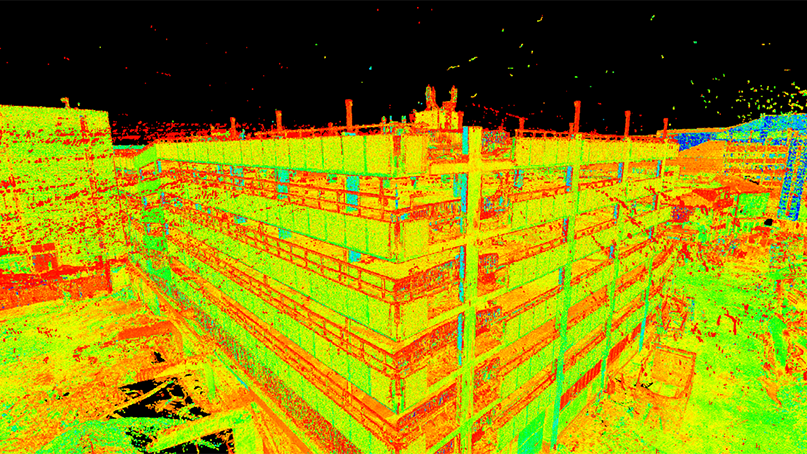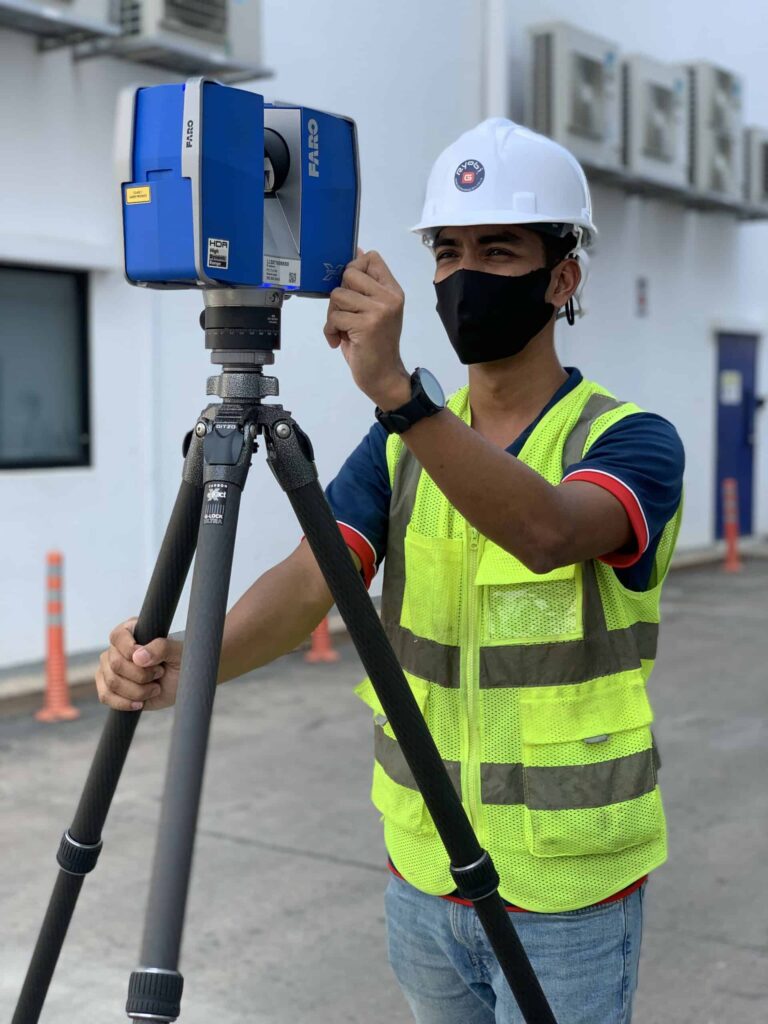Top Reasons to Adopt 3D Scanning for Architecture
Wiki Article
Exploring the Applications of 3D Laser Scanning in Archaeology and Cultural Heritage Preservation
The integration of 3D laser scanning technology in archaeology and social heritage preservation marks a substantial innovation in how historic sites and artifacts are recorded and evaluated. This non-invasive method offers exact spatial data, disclosing detailed details that were formerly difficult to record. As the applications of this innovation remain to advance, different ramifications for education, preservation, and documents emerge, welcoming further exploration into its transformative influence on the area.Recognizing 3D Laser Scanning Innovation
3D laser scanning innovation has reinvented the area of archaeology by supplying thorough and accurate spatial information. This advanced technology employs laser beams to catch numerous information points from an item or site, creating a highly exact three-dimensional representation (3D Scanning). The resulting point clouds can disclose elaborate details of historical sites, frameworks, and artifacts that might be undetectable to the naked eyeUtilizing this technology, archaeologists can record the exact measurements, forms, and placements of things with extraordinary precision. This approach reduces the danger of human error and eliminates the need for considerable hand-operated dimensions. The data gathered can be examined and shared quickly, facilitating cooperation amongst scientists. By incorporating 3D laser scanning with GIS and various other digital devices, archaeologists improve their capability to envision and analyze historic contexts, bring about much deeper understandings into ancient cultures and atmospheres.
Enhancing Historical Documentation
3D laser scanning significantly enhances archaeological paperwork through its ability to develop accurate website maps. This modern technology helps with comprehensive artefact analysis, offering understandings that typical approaches may ignore. In addition, it assures the conservation of contextual information, which is vital for comprehending the partnerships within historical sites.Exact Website Mapping
While conventional mapping techniques usually battle with catching the elaborate details of historical sites, progressed laser scanning innovation offers a revolutionary approach to accurate site mapping. This technique enables archaeologists to develop extremely outlined and precise three-dimensional depictions of websites, showcasing topographical variants and architectural features with amazing integrity. The capacity to catch numerous data points in a matter of mins enables comprehensive documentation, which can be quickly updated and shared among researchers. Furthermore, laser scanning facilitates the measurement of complex geometries that would be hard to evaluate making use of traditional tools. Because of this, this technology boosts the precision of site maps, adding substantially to the preservation and understanding of cultural heritage resources.Comprehensive Artefact Evaluation
Laser scanning modern technology substantially boosts the evaluation of archaeological artifacts, offering researchers with unmatched detail and accuracy. This technique catches intricate surface appearances, dimensions, and features that conventional documentation methods might forget. By producing high-resolution 3D models, scholars can closely analyze artifacts without the threat of damages fundamental in physical handling. This precision enables for much better comparative studies, making it possible for experts to recognize manufacturing methods, stylistic variations, and potential social significance. Furthermore, the capacity to adjust and picture data in 3 dimensions helps with a deeper understanding of artifact capability and use. In general, laser scanning promotes an extra detailed approach to archaeological documents, making sure that essential information about artifacts is preserved for future research and education and learning.Conservation of Contextual Data
Maintaining contextual data is crucial for improving historical paperwork, as it ensures that searchings for are recognized within their original environmental and social structures. 3D laser scanning technology significantly contributes to this preservation initiative by recording detailed spatial partnerships amongst artifacts, structures, and their environments. By generating precise 3D versions, excavators can record the specific locations and alignments of items in situ, assisting in a complete understanding of their context. This modern technology makes it possible for researchers to take another look at and evaluate websites long after excavation, maintaining the honesty of contextual information. Furthermore, digital records produced through scanning can be shared around the world, fostering collaborative research and public involvement. Eventually, maintaining contextual information via 3D laser scanning enriches historical stories and promotes a more extensive gratitude of cultural heritage.Conservation of Cultural Heritage Sites
As innovations in modern technology proceed to develop, the conservation of social heritage sites has actually become progressively reliant on ingenious methods such as 3D laser scanning. This innovation enables the comprehensive documentation of landscapes, artefacts, and frameworks, catching their exact dimensions and spatial partnerships in a non-invasive fashion. By creating high-resolution 3D designs, researchers can monitor and analyze damage patterns, allowing aggressive conservation approaches.Furthermore, 3D laser scanning promotes the sharing of thorough website information with the international area, advertising partnership among archaeologists, preservationists, and historians. These designs serve as important sources for education and public engagement, elevating awareness of cultural heritage concerns. The electronic records produced can safeguard versus loss due to environmental aspects, criminal damage, or neglect. Generally, 3D laser scanning stands for a transformative approach to the preservation of social heritage, making sure that these sites can be studied and appreciated by future generations.

Restoration and Repair Efforts
The comprehensive paperwork achieved via 3D laser scanning plays a significant duty in restoration and restoration initiatives within archaeology. This innovation offers exact measurements and high-resolution images, permitting accurate electronic designs of artefacts and structures. These designs function as crucial recommendations throughout repair processes, making it possible for archaeologists to imagine the original design and make educated decisions regarding techniques and materials required for repair service.Moreover, 3D laser scanning facilitates the repair of damaged or lost aspects by creating comprehensive replicas. This procedure help in making sure that repairs maintain historic stability while additionally permitting ingenious approaches to restore sites. The capacity to evaluate wear patterns and architectural weaknesses through checked data enhances understanding try this of a site's historical context and its use over time. Consequently, 3D laser scanning not only preserves the physical aspects of social heritage but also enriches the narrative of history, assisting future remediation undertakings.
Educational and Research Opportunities
The combination of 3D laser scanning in archaeology opens up substantial educational and research chances. Academic collaborations can boost the understanding of ancient websites, while specialized training workshops gear up experts with necessary skills for using this technology. With each other, these efforts foster a richer involvement with archaeological practices and techniques.Academic Collaborations in Archaeology
Collective initiatives in archaeology have actually ended up being increasingly necessary for advancing both academic and study opportunities. By cultivating partnerships among colleges, research study establishments, and social heritage companies, these cooperations facilitate the exchange of knowledge and resources, boosting the top quality of historical research studies. Joint tasks commonly utilize varied competence, enabling ingenious approaches and detailed analyses, specifically in the application of technologies like 3D laser scanning. Such collaborations also advertise interdisciplinary methods, engaging fields such as location, conservation, and background science. Furthermore, scholastic collaborations commonly result in the advancement of brand-new educational programs and training programs, preparing the following generation of excavators to properly make use of advanced technologies in their work. Eventually, these alliances add to the preservation and understanding of cultural heritage.Training Workshops for Experts
Educating workshops for experts in archaeology are progressively essential for improving abilities in the application of innovative technologies such as 3D laser scanning. These workshops offer individuals with hands-on experience in using advanced tools and software, cultivating a much deeper understanding of data capture and evaluation procedures. Experts can find out to produce accurate electronic versions of archaeological websites, which markedly help in paperwork and preservation initiatives. Additionally, these training sessions typically consist of conversations on finest methods and case research studies, advertising understanding exchange among participants. By investing in continuous education, specialists can remain updated on developing innovations, ultimately boosting the efficiency of their research and cultural heritage preservation initiatives. This commitment to ability enhancement is essential for advancing the field of archaeology.Future Fads in 3D Laser Scanning for Archaeology
As improvements in technology continue to reshape numerous fields, the future of 3D laser scanning in archaeology promises to boost both the precision and effectiveness of website documents and evaluation. Emerging fads indicate a growing assimilation of expert system and machine discovering, facilitating automated information handling and analysis. This advancement will certainly permit excavators to assess intricate datasets much more quickly, leading to faster understandings right into historic contexts.The combination of drone innovation with 3D laser scanning is most likely to broaden, making it possible for detailed airborne studies of historical sites that are difficult to gain access to. The enhancing price of scanning tools will democratize access, check my blog equipping smaller sized institutions and independent scientists to make use of these devices effectively. In addition, advancements in virtual truth and augmented reality will allow immersive experiences for public interaction and education and learning, making historical searchings for much more interactive and accessible. These patterns jointly signify a transformative future for archaeology, boosting preservation efforts and broadening the technique's outreach.
Often Asked Concerns
Exactly How Much Does 3D Laser Scanning Equipment Price?

What Are the Limitations of 3D Laser Scanning?
The restrictions of 3D laser scanning consist of high prices, potential data handling difficulties, level of sensitivity to environmental problems, and difficulty capturing intricate details in intricate surfaces, which can influence the accuracy and efficiency of scanned representations. (3D Scanning)
Can 3D Laser Scanning Be Utilized Undersea?
Yes, 3D laser scanning can be made use of underwater, yet it needs specific devices and techniques to get over obstacles such as water distortion and limited presence. Effective applications have actually been demonstrated in aquatic archaeology and underwater surveys.How much time Does a Scanning Task Typically Take?
A scanning project commonly takes anywhere from a couple of days to numerous weeks, depending upon the complexity and dimension of the location being scanned, along with the preparation and post-processing needs entailed in the task.Exist Specific Software Demands for Processing 3D Checks?
Yes, particular software application demands for refining 3D scans include programs capable of dealing with huge great site factor clouds, such as Autodesk ReCap, Cyclone, or MeshLab. These devices assist in evaluation, visualization, and assimilation right into various applications efficiently.The combination of 3D laser scanning technology in archaeology and cultural heritage preservation marks a significant innovation in just how historical sites and artefacts are recorded and assessed. 3D laser scanning modern technology has revolutionized the area of archaeology by supplying exact and in-depth spatial information. As advancements in innovation proceed to progress, the conservation of social heritage sites has ended up being increasingly reliant on ingenious techniques such as 3D laser scanning. As developments in innovation continue to reshape different fields, the future of 3D laser scanning in archaeology guarantees to boost both the precision and effectiveness of website documentation and analysis. The combination of drone technology with 3D laser scanning is likely to increase, allowing detailed aerial studies of historical sites that are difficult to gain access to.
Report this wiki page